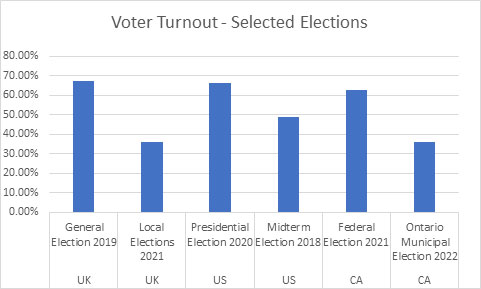Empowering Communities in Election Years: Top 10 Engagement Strategies

During 2024, experts predict unprecedented voter turnout globally, making it a pivotal year in
electoral history. With well over a billion people expected to participate in national elections,
the potential for significant change looms large. For non-profit organizations, this heightened
political activity brings both challenges and opportunities. With millions of people actively
engaged in political discourse and civic participation during election years, non-profits often
find themselves navigating a landscape influenced by shifting priorities, changing
regulations, and evolving community sentiments.
Research shows voter turnout tends to increase during national election years, with a notable
surge in civic engagement across various demographic groups. For example, in the United
States, voter turnout in presidential elections typically exceeds that of midterm elections, with
millions more individuals casting their ballots.

This heightened political engagement presents non-profits with the opportunity to amplify
their advocacy efforts, raise awareness about social issues, and mobilize support for their
causes.
However, it also poses challenges such as increased competition for funding, potential
changes in government policies impacting their operations, and the need to navigate sensitive
political dynamics within their supporter base. Despite these challenges, election years offer
non-profits a unique platform to engage with their communities, leverage public discourse for
social change, and drive meaningful impact through strategic initiatives and collaborations.
Here are the top 10 engagement strategies non-profits must consider to empower
communities in election years:
1. Adapting to New Leadership in Election Years
Establish Communication Channels: Non-profit organizations can engage with incoming
officials by establishing effective communication channels. This includes reaching out to
newly elected officials to introduce the organization’s mission and priorities, scheduling
meetings to discuss key issues, and providing relevant information and resources. The key to
success is ensuring communications with an open and respectful tone.
Conduct Policy Analysis: Non-profits should conduct thorough policy analysis to
understand the evolving priorities and agendas of incoming officials. This involves
monitoring policy statements, reviewing legislative proposals, and identifying areas of
alignment with the organization’s mission and advocacy goals.
Collaborate and Build Alliances: Non-profit organizations can adapt their advocacy
strategies by collaborating with other stakeholders and building alliances to amplify their
voices and influence policy outcomes. This includes forming coalitions with like-minded
organizations, engaging with community groups, and partnering with academic institutions or
research organizations to support evidence-based advocacy.
2. Navigating Shifting Social Issues for Non-Profits
Regular Needs Assessments: Conduct regular assessments to understand the changing
dynamics and priorities within the community. This can involve surveys, focus groups,
interviews, and data analysis to gather insights into emerging issues, challenges, and needs.
Stakeholder Engagement: Engage stakeholders, including community members, partners,
funders, and policymakers, in meaningful dialogue and collaboration. Actively seek
feedback, input, and insights from diverse stakeholders to ensure that organizational
initiatives are responsive to community needs and priorities.
Flexibility and Adaptability: Maintain flexibility and adaptability in organizational
strategies, programs, and operations to respond effectively to emerging issues and changing
community needs. Non-profits should be prepared to pivot, innovate, and adjust their
approaches based on shifting circumstances and evolving priorities.
3. Addressing Issue Fatigue Among Constituents
Acknowledge the risk of issue fatigue among constituents amidst constant political discourse.
Mitigate this by diversifying communication channels, maintaining relevance, and framing
messaging in innovative ways to sustain engagement.
4. Embracing Mission Resilience During Elections
Remind stakeholders that the core mission of the non-profit remains unwavering, irrespective
of electoral outcomes. Emphasize the enduring commitment to community support and the
organization’s vital role in driving positive change.
5. Strengthening Community Engagement in Election Years
Community Forums or Town Halls: Organize regular community forums or town hall
meetings to provide a space for open and respectful dialogue, discussion, and feedback
exchange between the organization and community members.
Online Engagement Platforms: Establish online engagement platforms such as social media
channels, community forums, or virtual discussion groups to facilitate ongoing
communication and interaction with community members.
Community Advisory Boards or Committees: Create community advisory boards or
committees composed of diverse stakeholders, including community members, leaders,
volunteers, and representatives from partner organizations. These advisory groups can serve
as forums for collaborative decision-making, strategic planning, and program development.
6. Building Strategic Partnerships for Greater Impact
Forge alliances with like-minded organizations, government agencies, and community
leaders to amplify impact and leverage resources effectively. Collaborative efforts can yield
greater influence and facilitate broader systemic change.
7. Promoting Civic Education for Voter Awareness
Empower constituents with the knowledge and skills to participate meaningfully in civic
processes. Offer educational programs, workshops, and resources to enhance civic literacy
and promote informed decision-making.
8. Leveraging Technology for Non-Profit Outreach
Harness the power of digital platforms and technology to expand outreach, facilitate
engagement, and mobilize support. Utilize social media, online forums, and digital
campaigns to connect with diverse audiences and amplify advocacy efforts.
9. Celebrating Community Resilience and Innovation
Highlight stories of resilience, innovation, and community spirit to inspire hope and
solidarity. Showcase the collective strength and resilience of the community in overcoming
challenges and driving positive change.
10. Staying Agile and Responsive to Political Dynamics
Remain agile and adaptive in response to evolving political dynamics and community needs.
Continuously evaluate and adjust strategies to remain relevant, responsive, and impactful
amidst uncertainty and change.
Conclusion
As we anticipate the monumental global voter turnout projected for 2024, non-profit organizations must prepare to navigate the challenges and seize the opportunities presented by heightened political activity. With over a billion people expected to participate in national elections, the potential for significant change is immense. However, amidst this uncertainty, the mission of non-profits to support their communities remains steadfast.
To ensure success within the local community during an election year, non-profits must embrace strategic engagement strategies that empower communities and drive positive change. By anticipating the possibility of new decision-makers taking office, adapting advocacy strategies to align with evolving priorities, and engaging with incoming officials, non-profits can effectively navigate the shifting political landscape.
Additionally, non-profits must remain attuned to emerging social issues and evolving community needs, proactively addressing challenges and aligning organizational initiatives accordingly. By conducting regular needs assessments, engaging stakeholders, and maintaining flexibility and adaptability, non-profits can stay responsive and relevant in addressing pressing concerns.
Furthermore, non-profits can strengthen community engagement by fostering inclusive dialogue, building strategic partnerships, promoting civic education, and leveraging technology. By celebrating community resilience, staying agile and responsive, and embracing mission resilience, non-profits can navigate the complexities of an election year and continue driving meaningful impact in their communities.
Next Steps:
1. Establish Communication Channels with Incoming Officials: Reach out to newly
elected officials to introduce the organization’s mission and priorities, schedule
meetings, and provide relevant information.
2. Conduct Policy Analysis: Monitor policy statements and legislative proposals to
understand evolving priorities and identify areas of alignment for advocacy efforts.
3. Foster Inclusive Community Engagement: Organize community forums, leverage
online engagement platforms, and create advisory boards to facilitate dialogue and
collaboration with community members.
About Givergy
In essence, Givergy helps to empower non-profits to raise more, engage donors
and amplify the impact of their charitable initiatives through a suite of seamless
fundraising tools and consultative advice.
Whether you are fundraising to draw attention to a hot-button topic or running
your annual summer fate, Givergy has all the tools and advice needed to ensure
your next campaign, or in-person event, is a roaring success.
To find out more please don’t hesitate to contact one of our expert team.
About Our Guest Writer: Javed S. Khan
For the past two decades, Javed has been involved with various organizations, ranging from
the Chamber of Commerce to numerous sports organizations. For the last decade, he has
played an integral role in shaping the Aurora Sports Hall of Fame, initially as a Director and
recently as the President & Chair.
Throughout his journey, Javed has celebrated victories and learned from mistakes, garnering
invaluable insights into effectively managing successful nonprofit organizations. One of the
most important lessons he has learned is the need to adapt to evolving community landscapes
to ensure continued relevance and success.
In addition to his contributions to the Aurora Sports Hall of Fame, Javed is a highly-regarded
international speaker who captivates audiences at conferences and seminars worldwide. As a
Senior Marketing Executive, he collaborates with business leaders to develop impactful
marketing strategies that resonate with audiences and drive long-term success in terms of
both awareness and sales.
Data Sources:
Research Briefing on Voter Turnout: Read More
Pew Research on Voter Turnout: Read More
Elections Canada Content: Read More
CBC News on Voter Turnout: Read More
Benefit Auction Dos and Dont’s Every Fundraiser Should Know
April 11, 2025
Raffle Basket Ideas
April 11, 2025
What is a Chinese Auction (Tricky Tray Fundraiser)?
April 4, 2025
Fundraise Completely Free with Givergy: Here’s How
March 28, 2025
20 School Fundraising Ideas That Make a Big Impact
March 21, 2025
